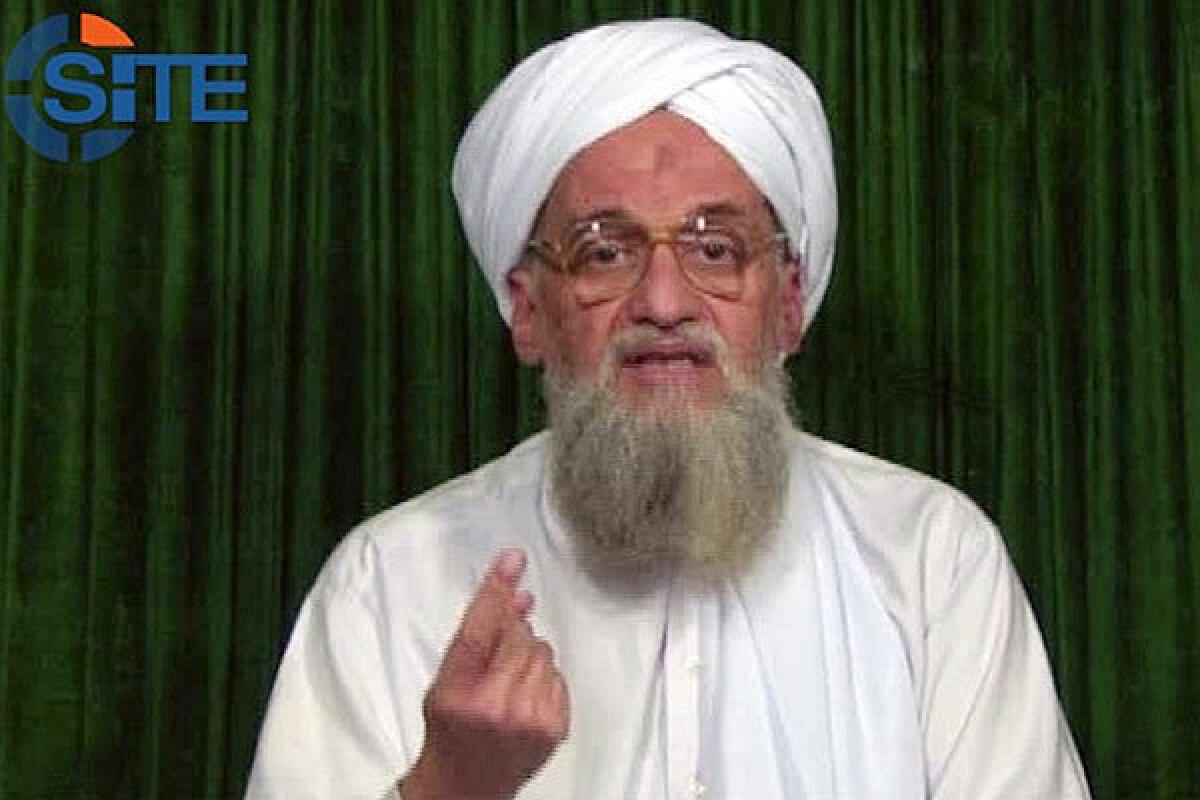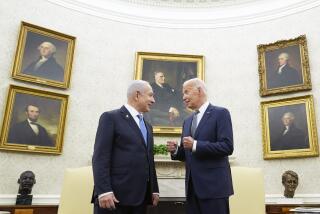Terrorist leader’s order prompted diplomatic shutdowns

- Share via
WASHINGTON — The Obama administration’s decision to temporarily shut 28 diplomatic posts came after U.S. intelligence intercepted communications between the Al Qaeda leader who succeeded Osama bin Laden and the head of the terrorist network’s affiliate in Yemen, U.S. and Yemeni officials said.
Officials said Monday that Ayman Zawahiri, the Egyptian leader of Al Qaeda who is believed to be hiding in Pakistan, ordered Nasser Wuhayshi, who heads the affiliate known as Al Qaeda in the Arabian Peninsula, or AQAP, to orchestrate an attack or attacks as early as last Sunday.
“Al Zawahiri is trying to micromanage” operations in Yemen, said a Yemeni official who requested anonymity when discussing intelligence matters. “Because there is nothing left in Pakistan, he is communicating a lot with AQAP.”
The intelligence prompted the State Department last week to close embassies, consulates and smaller diplomatic posts across much of the Middle East and parts of Africa, as well as issue a worldwide travel alert for U.S. citizens.
Officials say the threat has not waned, and the State Department has extended the closure of 19 diplomatic facilities through this week.
“They are trying to figure out now whether Al Qaeda has decided to postpone the attack or has chosen a different target,” said Rep. Adam B. Schiff (D-Burbank), a member of the House Intelligence Committee. “I don’t think they know with any specificity where or when the attacks may be.”
Schiff said intelligence officials “believe this is more specific, more credible and more action-oriented than mere aspirations to attack.”
The National Security Agency, which has been rocked by disclosures by former contractor Edward Snowden, intercepted the electronic messages in what appeared to be a rare security breach between the two senior Al Qaeda leaders. Some lawmakers have cited the successful collection and analysis of the communications as evidence that the NSA’s surveillance programs must be preserved.
There is no indication that the NSA’s collection of nearly all U.S. telephone calling records, the most controversial program revealed by Snowden, played a role in intercepting the communications, officials said.
White House Press Secretary Jay Carney said Monday that the decision to close more than two dozen U.S. facilities reflected an “abundance of caution.”
An attack by armed extremists on a lightly guarded U.S. diplomatic facility in Benghazi, Libya, in September killed the American ambassador, an aide and two CIA contractors.
Some experts discount the likelihood of an attack succeeding against a U.S. embassy. Many are under constant threat, and defenses have been bolstered since the attacks 15 years ago this month on the embassies in Kenya and Tanzania. More than 200 people died in those bombings.
“The threat is emanating from and may be directed towards the Arabian Peninsula, but it is beyond that, potentially, and that is why we have taken some of the actions we’ve taken,” Carney said.
The White House has maintained that its counter-terrorism efforts, including drone strikes, have gutted Al Qaeda. Carney said such claims referred only to the network’s “core” leadership based in Pakistan.
“Affiliate organizations, including in particular Al Qaeda in the Arabian Peninsula, have strengthened,” he said.
Officials are particularly concerned about Ibrahim Hassan Asiri, a Saudi-born bomb maker living in Yemen who has helped orchestrate several high-profile but unsuccessful plots.
U.S. officials have said Asiri designed the bomb worn by Umar Farouk Abdulmutallab, a Nigerian who sought to bring down a Northwest Airlines jet over Detroit on Dec. 25, 2009. The bomb, which was sewn in his underwear, did not explode, and Abdulmutallab was convicted in U.S. federal court.
John Pistole, who heads the Transportation Security Administration, told a conference last month that Asiri had designed an improved version of the bomb that had a double detonation system to improve its chances of exploding and was coated with caulk to limit emissions of vapors to thwart bomb-sniffing dogs and machines.
The civil war in Syria and turmoil across much of the Arab world have opened new spaces for small Al Qaeda affiliates to take root, said Bruce Hoffman, a former CIA advisor who heads the Center for Security Studies at Georgetown University.
“They are active in more theaters of operation than they were five years ago,” Hoffman said. “The Al Qaeda brand has certainly regenerated itself, and largely, I think, that’s a reflection of Syria.”
Al Nusra Front, which is affiliated with Al Qaeda, is one of the strongest rebel factions opposing Syrian President Bashar Assad.
More to Read
Sign up for Essential California
The most important California stories and recommendations in your inbox every morning.
You may occasionally receive promotional content from the Los Angeles Times.











